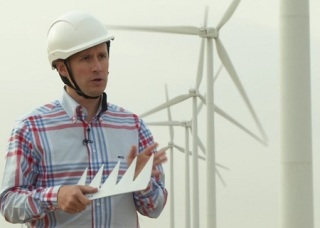Oct 5 2015
A European research project aims to reduce the cost of wind energy generation by introducing technical improvements to turbines, which will have to be much quieter in the future than is the case today.

It may sound strange to anyone who lives in the vicinity of one or more wind turbines, but wind currently represents just 4.5-5% of the renewable energy supply in the world.
“And that’s despite its 25% annual growth rate since 1990,” says Jens Ulrich Laursen, project manager at LM Wind Power, the world’s largest manufacturer of wind turbine blades. “The International Energy Agency (IEA) has stated that renewable energy penetration should reach 10% by 2020, with wind power growing to 50% of the renewable share by 2020,” notes Laursen.
Future wind turbines will be built both offshore and onshore. Much of the future wind energy will be harvested, indeed, in our backyards – close to urban areas.
The problem is that in those areas noise emission regulations are often very restrictive. This issue is one of the focus areas of the European project Windtrust, which aims to reduce the cost of wind energy generation by further improving the reliability of key components of the turbine.
“What most affects the noise level is actually the speed of the blade tips and the rotor diameter,” says Jasper Madsen, chief engineer at LM Wind Power, one of the industrial players in the consortium behind the project, adding: “Blade lengths have been growing considerably during the past years, as wind farms have been installed in lower wind speed sites, thus increasing the swept area to increase energy generation. “
One of the ways to deal with noise issues today is to stop the wind turbine in certain wind directions. Or run the turbine in low-noise mode. However, “both actions have a negative impact on the energy generation,” points out Madsen.
“Some of the latest developments in this field are serrations, which are serrated plastic panels mounted on the trailing edge of the blade,” explains Madsen, adding: “These serrations act as flow control devices with focus on lowering the noise emission from the blades. Their lightweight design and simple mounting process make them an attractive choice not only for new turbines, but for those already installed.” And more importantly, “at wind farms in noise-restricted areas, turbines equipped with this technology will be able run at an optimal setting and have higher annual energy generation.”
Moreover, the company has developed under the European project an innovative coating protection system which ensures longer life-time, less down-time and lower maintenance costs. Certain wind turbine operational and environmental conditions such as rain, hail and particle impacts can lead to blade edge surface erosion, if unprotected.
“The condition of the leading edge surface of a wind turbine blade significantly affects the energy generation efficiency and hence the energy generation of a wind turbine,” says Michael Drachmann Haag, lead engineer at LM Wind Power.
He adds: “Our extensive research programme has led to the development of a novel leading edge protective solution that has surpassed all current test standards.” What is known as the ProBlade system is currently being tested in extreme operational environments. This is the first step towards widespread adoption.